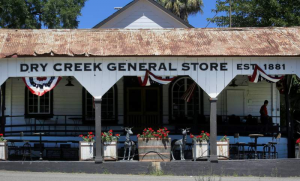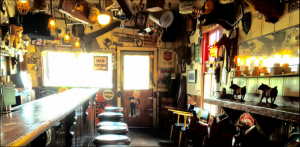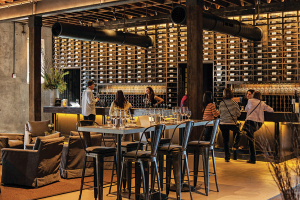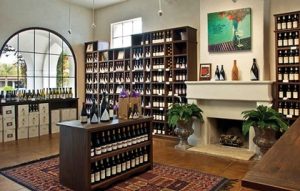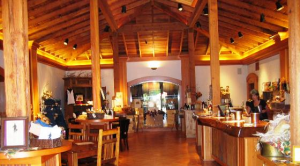Sonoma County has several rather distinct wine growing regions, each of which specializes in certain grapes that flourish in their respective terroirs. There’s Russian River for Pinot Noir, Alexander Valley for Cabernet Sauvignon and Dry Creek for Zinfandel. Every place grows Chardonnay. For wine tasters, one of the problems with the broad spread of Sonoma County is that wherever you go to taste wine, you’re pretty far from a place to buy lunch.
Photo courtesy of The Press Democrat
In the Dry Creek sector, you really have only one choice: the Dry Creek General Store. This emporium on Dry Creek Road comes complete with a lot of history. It’s an attraction in itself, beyond the food. It has been open since 1881, serving gold miners, bootleggers, travelers and locals for decades. In its day, it has sold all sorts of provisions, as evidenced by an ancient photo on the store’s web site (http://www.drycreekgeneralstore1881.com) proudly stating that hardware and dry goods are for sale.
Today’s Dry Creek General Store is a combination delicatessen and gift shop. The deli side of the store makes sandwiches from a wide variety of meats and cheeses on artisanal breads, together with salads. The other sells cutesy things that nobody needs but that are pretty little gifts. But it wasn’t always this way. In recent memory, the meats were ham and roast beef, the breads commercial white and whole wheat. The rest of the store wasn’t a gift shop. They sold nails and pots and towels and, and, and – the stuff of a true rural general store. Yuppie sandwiches and merchandise make the store more accessible to many travelers, at the expense of authenticity.
And then there’s the bar adjacent to the store. As of this writing, it’s closed, because some patrons thought it was okay to take their drinks away with them, a violation of local licensing laws. The owners are fighting to get their permit back and so the bar will surely be open soon. Then you will be able to see a crazy collection of general store memorabilia hanging from the ceiling and you can down your beer while sitting on a horse saddle. And you’ll be able to share that beer with a few locals who look like they stepped out of a time warp or from central casting.
Photo courtesy of Dry Creek General Store
If you’re lucky, you’ll arrive on a day when there’s a barbeque going in front of the store. Depending on the day, you’ll be able to buy brisket or sausages or even crabs. While there’s no documented evidence of such cookouts in the old days, it feels like a throwback to a communal past that may never have existed, but ought to have.
And that’s the reason to make sure you visit the Dry Creek General Store in your wine tasting travels. It’s a real part of the past, now adapted to the needs of the present day. The people of the area don’t need a general store when there’s a Walmart just down the highway. In our times, there’s money to be made in wine tourism, so the store serves this generation of customers. Come and feel a part of the past as you munch on a sandwich out on the porch.
